IT Teams
• 8 min read
Top 6 IT Operations Management Best Practices
26th February, 2024
SHARE ON:
Managing day-to-day IT operations in the constantly evolving IT landscape has become complex. Thus, implementing IT operations management (ITOM) best practices is crucial to ensure the efficient functioning of your organization's IT infrastructure.
ITOM can help your team stay ahead of the game, from automating routine tasks to monitoring performance metrics.
So, if you want to optimize your IT operations, here are some ITOM best practices you can follow.
ITOM best practices involve adopting a standardized framework for IT teams to follow, ensuring that IT operations are aligned with business objectives and consistently meet quality standards. These best practices enable IT teams to streamline their operations, reduce errors, focus on strategic initiatives, and support the continuous improvement of IT operations, allowing them to stay up-to-date with evolving technology and business needs.
What Does IT Operations Management Entail?
IT Operations Management (ITOM) encompasses various activities and responsibilities that ensure the seamless functioning of an organization's IT infrastructure and services. It's a systematic way of overseeing, maintaining, and optimizing IT systems to deliver efficient and reliable IT services to users and customers.
Here are the key components that IT Operations Management entails:
Monitoring and Performance Management: ITOM involves continuous monitoring of the entire IT ecosystem, including servers, networks, applications, and databases. This ensures that IT teams have real-time insights into the performance of these systems, allowing for proactive issue detection and resolution.
Incident Management: When IT issues arise, IT teams are responsible for promptly identifying, classifying, and resolving incidents to minimize service disruptions. This involves implementing incident response protocols and escalation procedures.
Change Management: IT operations must handle changes to the IT environment, whether deploying new software, updating configurations, or making hardware upgrades. Change management processes ensure these modifications are carefully planned, tested, and executed without causing disruptions.
Capacity Planning: ITOM involves anticipating future IT resource needs by analyzing historical data and current usage trends. This ensures the organization has the right infrastructure to meet business demands while avoiding overprovisioning and overspending.
Security Management: IT teams implement and maintain robust security measures to protect data, systems, and networks from cyber threats. This includes firewall management, patching, and ensuring security standards and regulations compliance.
Asset Management: Managing hardware and software assets efficiently is a crucial aspect of ITOM. It involves tracking and optimizing the utilization of IT assets to reduce costs and improve asset lifecycle management.
Vendor Management: IT operations often involve engaging with vendors and managing vendor relationships. This includes procurement, contract management, and evaluating vendor performance.
Documentation and Knowledge Management: Keeping comprehensive documentation and knowledge repositories is essential for ITOM. This ensures that IT teams have access to up-to-date information, troubleshooting guides, and best practices.
So, ITOM best practices help maintain an organization's IT infrastructure's reliability, availability, and performance while adapting to evolving technology and business needs. It's a multifaceted approach that requires skilled professionals and efficient processes to ensure that IT services align with the organization's overall goals and objectives.
Key Benefits of ITOM Best Practices
Implementing IT Operations Management- ITOM best practices yields a wide range of benefits that are crucial for modern organizations:
Enhanced Efficiency: ITOM best practices streamline IT operations, reducing manual effort and automating routine tasks. This efficiency frees up IT teams to focus on strategic initiatives and innovation.
Reduced Downtime: Proactive monitoring, incident management, and change management practices help minimize system downtime, ensuring uninterrupted business operations.
Cost Savings: Effective capacity planning and asset management lead to optimized resource utilization, reducing unnecessary expenses and total IT costs.
Improved Security: ITOM best practices include robust security measures to protect against cyber threats, safeguard sensitive data, and maintain compliance with industry regulations.
Enhanced Service Delivery: By prioritizing incident management and quick issue resolution, ITOM ensures high-quality IT services, improving customer satisfaction and user experience.
Better Decision-Making: Data-driven insights from monitoring and performance management enable informed decision-making, facilitating the alignment of IT strategies with organizational goals.
Incorporating ITOM best practices into your daily operations boosts efficiency and helps organizations stay resilient, agile, and well-prepared to tackle any challenges.
In light of this, let’s explore the top 6 ITOM best practices:
6 Best Practices in IT Operations Management
Here are 6 essential ITOM best practices that empower teams to optimize IT processes, manage resources effectively, and align technology with organizational objectives.
1. Streamline Your IT Infrastructure by implementing a centralized configuration management database
A centralized configuration management database (CMDB) can streamline your IT infrastructure by providing a unified source of truth for all IT assets and their relationships to business services. This enables better IT services and operations management, improving efficiency and cost savings.
With a CMDB, you can easily track and manage changes and releases across your entire IT estate and ensure compliance with governance, risk, and compliance activities. You'll also better understand your IT services, allowing you to exert greater control over your IT assets and contracted third-party services.
Furthermore, by integrating analytics and real-time monitoring capabilities into your CMDB, you can easily view and monitor all ITSM and ITOM activities in real-time. This can help you quickly identify and address any issues or inefficiencies in your IT infrastructure, leading to improved performance and customer satisfaction.
2. Automate repetitive IT management tasks
Many IT processes involve repetitive and time-consuming tasks, such as user provisioning, deprovisioning, ticketing system, app approvals, updating software, running backups, and monitoring network performance.
By automating these tasks, IT teams can save time and reduce the risk of human error. It allows IT teams to focus on more strategic tasks and frees up time for innovation and problem-solving. You and your team can achieve greater efficiency and productivity by streamlining IT operations through automation.
Various tools and technologies are available to automate IT management tasks, such as configuration management tools, IT service management software, and network monitoring solutions. These tools can help automate patch management, software deployment, and system configuration tasks.
To sum up, automating routine and repetitive IT management tasks is a key aspect of ITOM's best practice that can help organizations improve efficiency, reduce costs, and enhance service delivery.
3. Create a Holistic IT Operations Management Plan
Creating a holistic ITOM plan involves developing a comprehensive strategy for managing all aspects of IT operations, including your team, processes, and technology. A holistic approach ensures that all IT processes are aligned with business goals and objectives and that IT services are delivered efficiently and effectively.
To create a holistic ITOM plan, you should first assess your current IT operations and identify areas that need improvement. This includes evaluating IT processes, infrastructure, and systems, as well as assessing the skills and capabilities of your IT team. This assessment allows organizations to develop a roadmap for implementing ITOM best practices and initiatives.
The ITOM plan should address all areas of IT operations, including IT service management, incident management, problem management, change management, and asset management.
A key component of this plan is stakeholder engagement. This involves collaborating with stakeholders across the organization to ensure that IT operations are aligned with business needs and objectives. It also involves communicating the ITOM plan and its benefits to stakeholders, including executives, IT staff, and end-users.
In summary, teams can ensure that their IT services are delivered efficiently and effectively by developing a comprehensive strategy that addresses all aspects of IT operations and engages stakeholders.
4. Align IT Operations with Your Business Objectives
Aligning IT ops with your business objectives means ensuring that your IT operations and services are closely integrated with your organization's overall goals and strategies. This involves understanding the business requirements and developing IT frameworks that support and enable them.
By collaborating with business stakeholders, IT teams can gain a deeper understanding of business needs and priorities and develop IT solutions that are tailored to these requirements.
Once the business objectives have been identified, IT teams can develop a roadmap for implementing IT solutions that support them. This includes prioritizing IT initiatives based on their alignment with business goals and ensuring that IT projects are aligned with business timelines and budgets.
Another important aspect of aligning IT with your business objectives is measuring the impact of IT on business outcomes. This involves tracking key performance indicators (KPIs) that measure the effectiveness of IT solutions in supporting business objectives.
Examples of KPIs include user adoption rates, service level agreement (SLA) compliance, and system availability.
By aligning IT with business objectives, you can achieve several benefits. This includes improving operational efficiency, reducing costs, and enhancing customer satisfaction.
5. Invest in the Right ITOM Tool
Choosing the right IT Operations Management (ITOM) tool is critical in efficiently managing your daily IT operations. ITOM tools provide a centralized platform for monitoring and managing your IT infrastructure and services, enabling IT teams to enhance efficiency, minimize downtime, and elevate service delivery.
These tools offer automation capabilities for IT management tasks, real-time performance monitoring, and effective incident and problem management. The key is identifying an ITOM tool that seamlessly aligns with your business needs and complements your IT strategy.
To ensure that your IT operations align with your strategic goals, consider essential features, specific requirements, and budget constraints when selecting your ITOM tool. Evaluate the scale and complexity of your IT infrastructure, your organization's unique IT management needs, and your financial considerations. These factors will guide you toward making an informed choice for effective IT operations management.
6. Continuously Monitor and Improve ITOM Processes
Continuous monitoring and improvement of ITOM processes is essential for organizations to ensure that their IT operations are efficient, effective, and aligned with their business objectives. This involves regularly reviewing and assessing ITOM processes, identifying areas for improvement, and implementing changes to optimize IT operations.
To continuously monitor and improve ITOM processes, you can follow these key steps:
Define ITOM process metrics: You should define metrics that measure the performance and effectiveness of ITOM processes. Examples of metrics include incident resolution time, change success rate, and availability of IT services.
Monitor ITOM process performance: Your admin should regularly monitor the performance of ITOM processes and track progress against defined metrics. This can be done using ITOM tools with real-time monitoring and reporting capabilities.
Analyze ITOM process data: You should analyze data from ITOM processes to identify trends and patterns and to identify areas for improvement. This can be done using analytics tools that provide insights into ITOM process data.
Implement process improvements: Based on the analysis of ITOM process data, you can implement changes and improvements to optimize IT operations. This can involve process redesign, automation, or implementing new ITOM tools and technologies.
IT operations are constantly evolving, and organizations must be able to adapt to new technologies, processes, and business requirements. Therefore, the ITOM plan should include a process for regularly reviewing and updating ITOM best practices and initiatives.
Now that we have covered all the best practices, you may now be seeking a suitable solution to assist you in your ITOM practices. Zluri is one such solution that can aid and improve your ITOM practices.
How to Enhance Your IT Operations with Zluri
Efficiency and effectiveness in IT operations are critical components for any modern organization striving to succeed in today's tech-driven world. And that's exactly what Zluri is designed to do. Zluri is an extensive SaaS operations management Platform that helps IT teams streamline and optimize their IT operations.

By integrating with existing systems and utilizing advanced automation capabilities, Zluri empowers IT teams to focus on strategic initiatives while ensuring day-to-day operations run seamlessly.
It provides a wide range of features, such as SaaS management, user lifecycle management- automated provisioning & deprovisioning, SaaS approvals, employee app store, real-time SaaS usage tracking, and compliance management. On top of that, all of these tasks can be accomplished conveniently from a centralized hub.
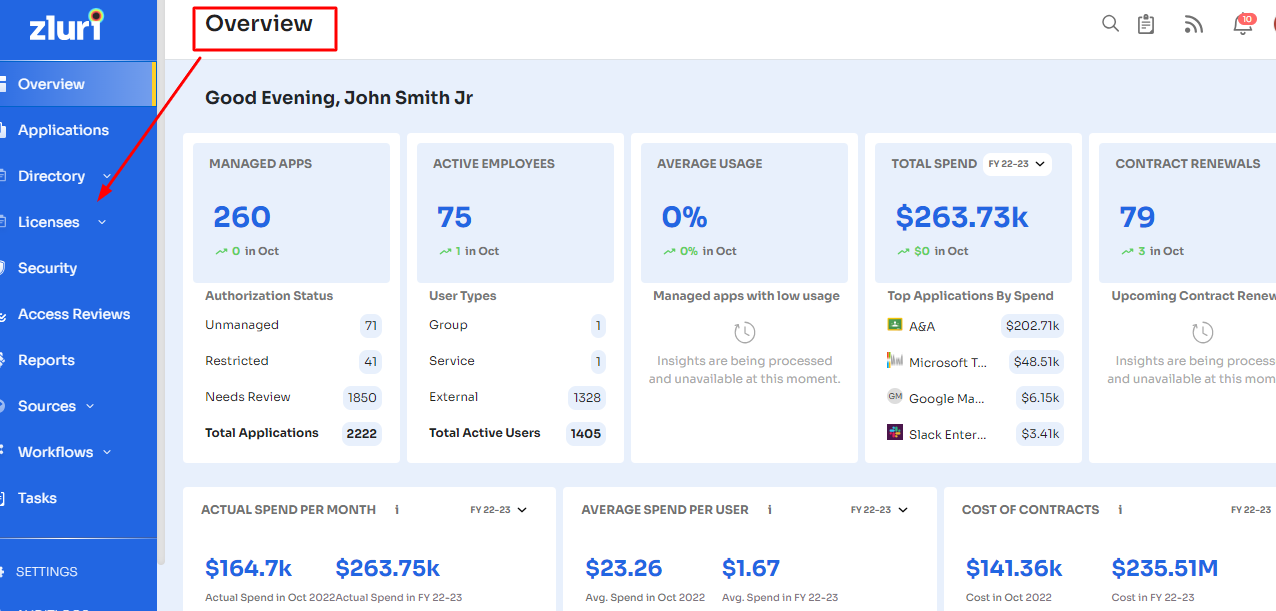
Here are several pivotal ways in which Zluri optimizes your day-to-day IT operations.
Efficient Onboarding and Offboarding:
IT admins can easily add multiple users and applications into customized workflows during the onboarding process, ensuring that new employees get access to the tools they need promptly.
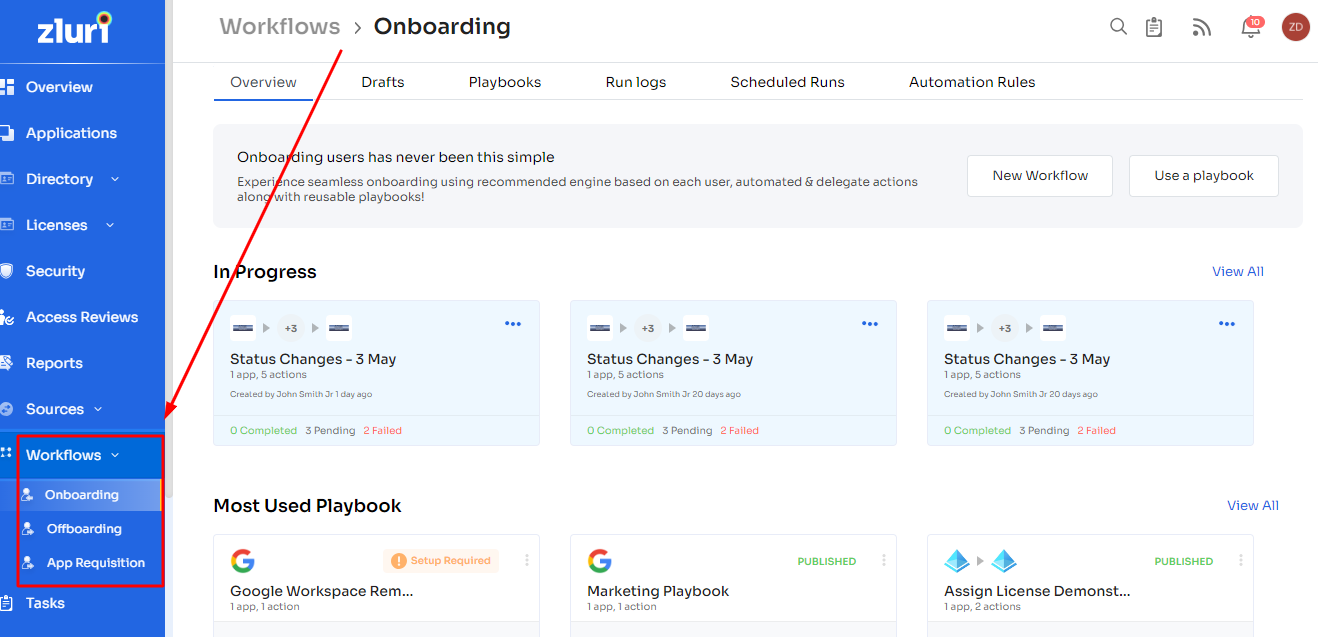
These workflows can be executed instantly or saved as reusable "playbooks" for future onboarding processes, which can be modified or deleted as per specific requirements.
During offboarding, Zluri simplifies user access revocation with just a few clicks. The corresponding workflows can also be saved as playbooks, recording actions for future offboarding procedures.
Employee App Store (EAS):
Zluri introduces the Employee App Store (EAS), a centralized, self-service portal that empowers employees to access the applications necessary for their roles effortlessly. The EAS seamlessly integrates with sanctioned tools, enabling employees to request software access with ease.
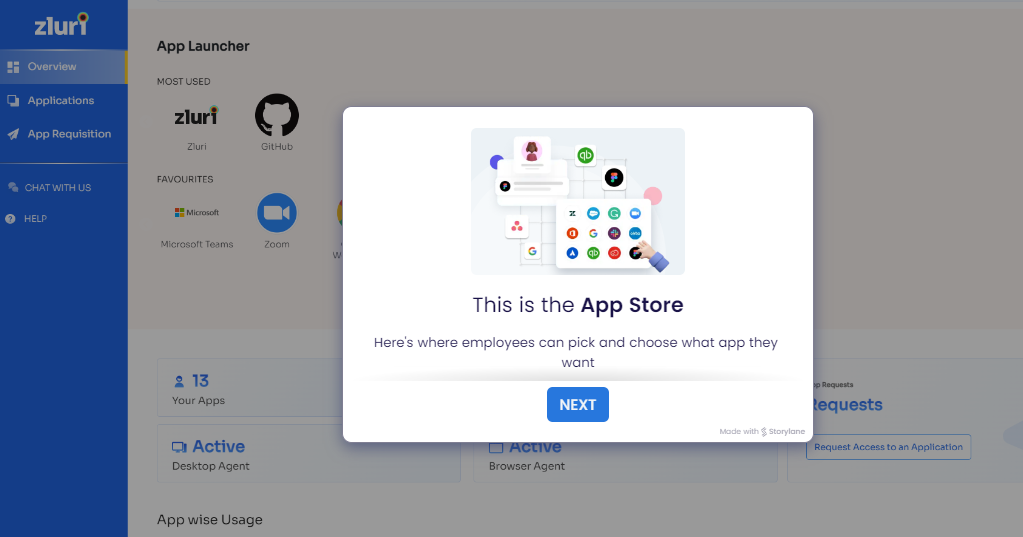
Automated approval workflows within the EAS ensure that requests are routed to the appropriate team members for timely processing, streamlining app approval processes.
Real-time Software Usage Visibility:
Zluri offers real-time insights into software usage and adoption, providing IT teams with a clear understanding of how software is being utilized. This visibility allows teams to identify underutilized software and make informed decisions regarding which software to retain and which to deprovision.
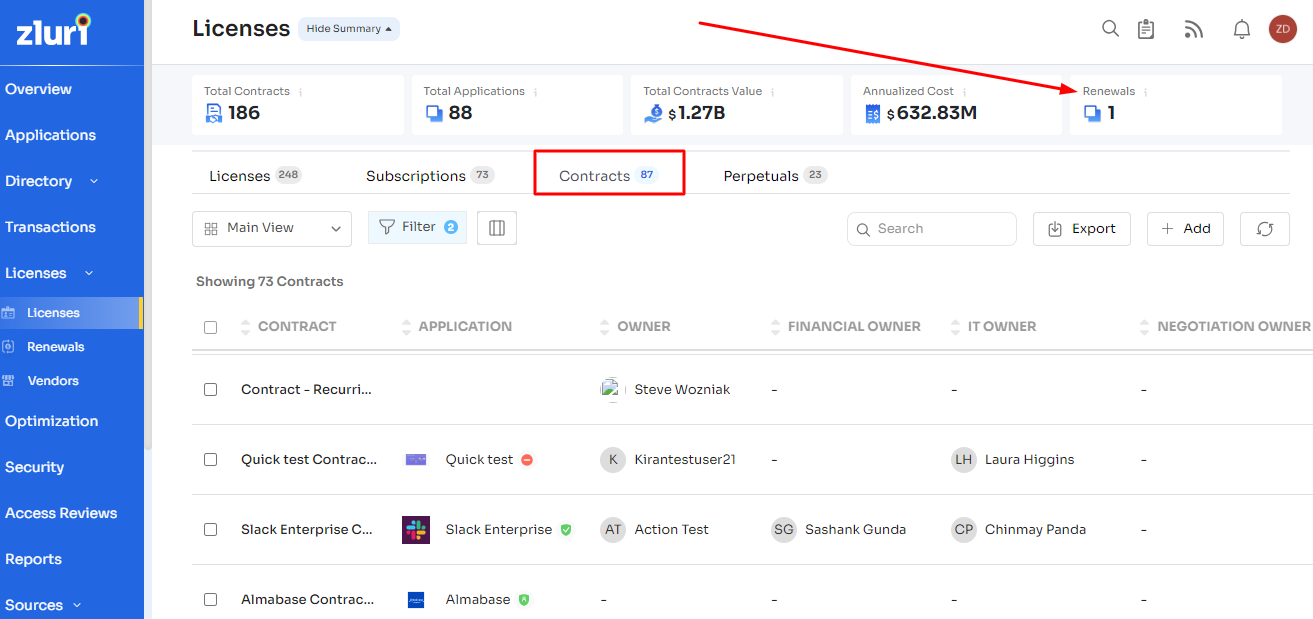
Compliance and Security:
Zluri helps organizations maintain compliance with industry and government regulations by implementing security features such as role-based access control, data encryption, and vulnerability management. These measures ensure data security and regulatory adherence, supporting a robust IT governance framework.
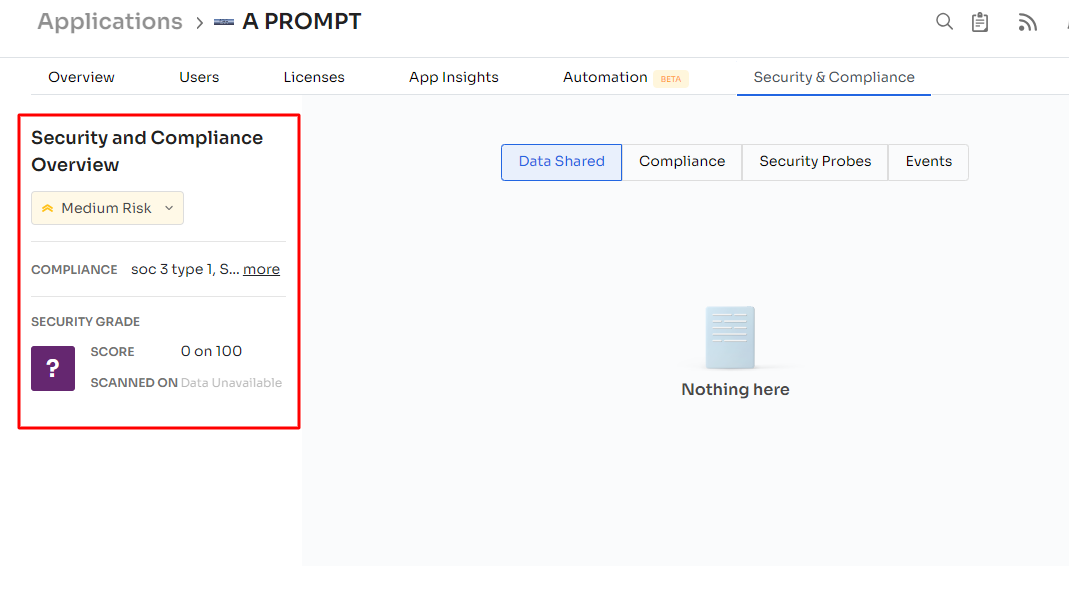
Zluri's comprehensive set of features simplifies IT tasks and enhances efficiency, security, and compliance across the organization. It empowers IT teams to focus on strategic initiatives while ensuring the smooth execution of critical operational processes.

What are you waiting for? Schedule a demo today and explore how Zluri can help you and your team manage daily IT operations.
Related Blogs
See More
Subscribe to our Newsletter
Get updates in your inbox
